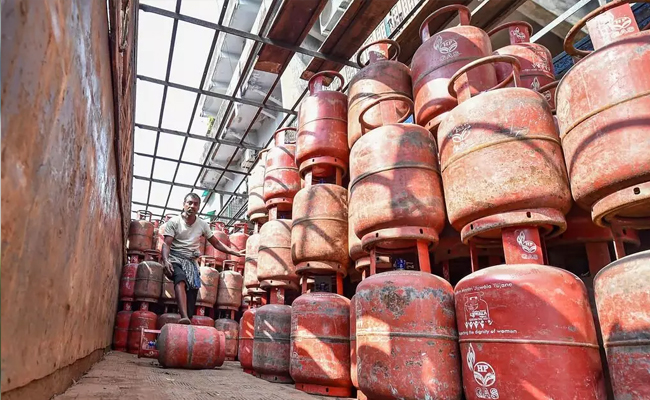Rajkot, Dec 16: Harshal Patel bowled a game-changing spell with the old ball as Haryana beat Rajasthan by 30 runs in a well-contested final to lift the Vijay Hazare Trophy here on Saturday.
Having scored 287 for 8 in 50 overs, Haryana were given a tough fight by Rajasthan, who were cruising at 201 for 4 with opener Abhijeet Tomar (106 off 129 balls) along with Kunal Singh Rathore (79 off 65 balls) slowly taking the team towards the target.
However, Harshal (3/47 in 9 overs) showed his wares by varying the pace of his deliveries in a game changing second five-over spell in which he gave away only 16 runs but picked both set batters to snuff out any chance that Rajasthan had. They were all-out for 257 in 48 overs.
No praise is enough for all-rounder Sumit Kumar (3/34 in 6 overs), who ran through Rajasthan top-order after scoring a quickfire 28 not out off 16 balls and also took a blinder inside the circle to win the 'Player of Match' as well as 'Player of Series'.
He scored 183 runs in lower-order at over 100 strike-rate and took 18 wickets in 10 games.
Credit must also be given to Haryana skipper Ashok Menaria, who had a good game with the bat and then marshalled his resources well, including bringing in Harshal, which turned out to be master-stroke.
Menaria, who had once been a Rajasthan skipper, didn't indulge in any overt celebrations, after leading his adopted state to first senior national trophy in 32 years (after Ranji Trophy 1991).
At the start of the innings, all-rounder Sumit Kumar, who opens the bowling, was lethal in his first spell as Rajasthan were quickly reduced to 12 for 3, which included wickets of two IPL regulars in Mahipal Lomror (2) and skipper Deepak Hooda (0).
However, opener Tomar did found an ally in Karan Lamba (20) as they added 68 runs for the fourth wicket but Haryana still had the upper-hand when the latter was dismissed.
But it was left-hander Kunal Singh Rathore, who smashed 79 off 65 balls, with some mighty heaves on the on-side to keep them in the hunt. He added 121 with Tomar and dominated the stand with five maximums.
But once he started developing cramps and when Harshal came back for his second spell, things changed. Tomar failed to clear Sumit while trying to loft the seamer over mid-off, while Rathore was holed out in the deep at long-off.
Earlier, after opting to bat, it was in-form Ankit Kumar (88 off 91 balls) and his veteran skipper Ashok Menaria (70 off 96 balls), who put up 124 for the third wicket to lay the foundation for a competitive score.
Ankit, who had hit a century in the quarter-final against Bengal, was once again in his element, hitting 12 crisp boundaries and a six off Ajay Singh Kukna.
Menaria, on the other hand, was patient as he hit eight fours, which also included some drives through on-side.
It was all-rounders Nishant Sindhu (29 off 22 balls), Rahul Tewatia (24 off 18 balls) and Sumit Kumar (28 off 16 balls), all of whom used long handle to good effect to take Haryana pass the 285-run mark.
Save veteran left-arm seamer Aniket Chaudhary (4/49 in 10 overs), the only other bowler, who impressed was out of favour leg-spinner Rahul Chahar (1/39 in 9 overs).
Brief Scores:
Haryana 287/8 (Ankit Kumar 88, Ashok Menaria 70, Aniket Chaudhary 4/49)
Rajasthan 257 in 48 overs (Abhijit Tomar 106, Kunal Singh Rathore 79, Harshal Patel 3/49, Sumit Kumar 3/34).
𝐇𝐚𝐫𝐲𝐚𝐧𝐚 are WINNERS of the #VijayHazareTrophy 2023-24! 🙌
— BCCI Domestic (@BCCIdomestic) December 16, 2023
Congratulations to the Ashok Menaria-led unit on winning the #VijayHazareTrophy 🏆 👏@IDFCFIRSTBank | #Final
Scorecard ▶️ https://t.co/0ub38RC4x8 pic.twitter.com/2wQri6HS0Y
Let the Truth be known. If you read VB and like VB, please be a VB Supporter and Help us deliver the Truth to one and all.
Thane (PTI): Authorities have seized illegally stored 1,839 gas cylinders and seven vehicles worth over Rs 67 lakh in the Dombivli MIDC area of Thane district, officials said on Saturday.
A special vigilance team of the Mumbai Rationing Department detected an illegal storage of domestic and commercial LPG cylinders in Phase-2 of Dombivli (East).
Cylinders belonging to multiple gas agencies were found stockpiled in closed vehicles, unauthorised warehouses, and open sheds without mandatory permissions from the Explosives Department, Fire Department, or oil companies, according to an official release.





